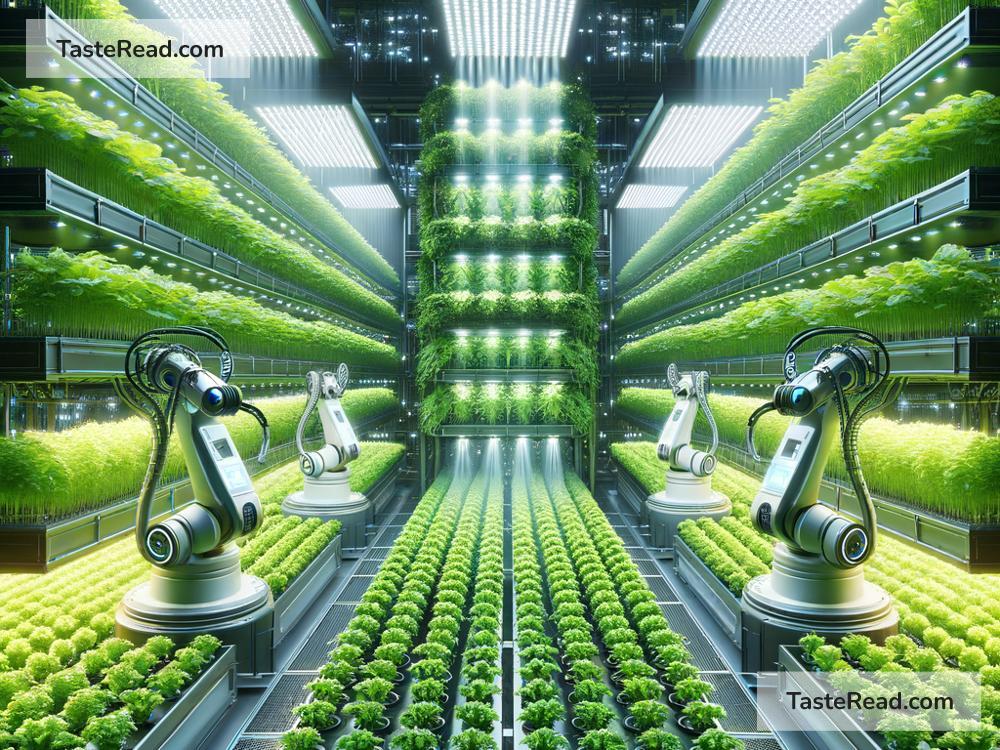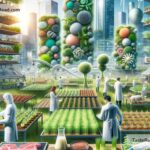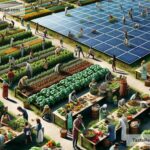The Future of Food and Green Technology: A Path Toward Sustainable Living
In recent years, people all over the world have been looking for ways to solve big global problems. One of the biggest challenges we face today is how to feed a growing population while protecting our planet. By 2050, experts estimate there will be 10 billion people on Earth. Feeding this many people will require smarter, greener solutions. Luckily, new innovations in food production and green technology are already paving the way to a more sustainable future.
Current Challenges in Food Production
Food production has come a long way over the years. We have farms that grow tons of food to feed billions of people. However, this efficiency comes at a cost. Traditional farming methods often harm the environment. For example, fertilizers and pesticides can pollute rivers and oceans, and raising livestock like cows for meat produces large amounts of greenhouse gases.
Another problem is how much waste is created by the food industry. From uneaten fruits and vegetables to leftover meals, food waste is a serious issue. According to the United Nations, around 30% of the food produced globally ends up wasted. This is bad for the environment and a missed opportunity to feed people in need.
Green Technology and Food Innovation
Green technology is any technology that helps the environment. When used in the food industry, it focuses on reducing waste, cutting pollution, and using less water and energy. Here are some exciting examples of how green technology and innovative ideas are shaping the future of food:
1. Farming Indoors with Vertical Farms
Imagine rows of crops growing indoors instead of on traditional farms. That’s the idea behind vertical farming. Vertical farms stack layers of plants, often in tall buildings, and grow them using LED lights and water systems. This saves space, uses less water, and avoids the need for harmful pesticides. These farms can even be set up in cities, meaning fresh food can be grown closer to where people live.
2. Lab-Grown Meat
Lab-grown meat, also called cultured meat, is produced by growing animal cells instead of raising and slaughtering animals. This technology has huge potential for reducing greenhouse gas emissions and cutting down on land use. Many companies are working on making lab-grown burgers, chicken, and even seafood taste just like regular meat. It’s still expensive for now, but as the technology improves, prices are expected to come down.
3. Plant-Based Alternatives
Another big trend is plant-based foods that mimic the taste and texture of meat. Companies like Beyond Meat and Impossible Foods are using plants to create burgers, sausages, and other foods that look and taste like traditional meat. These options are not only better for the environment but are also becoming popular with people who want to make healthier choices.
4. AI-Powered Farming
Technology like artificial intelligence (AI) is being used to make farming smarter. AI tools can help farmers monitor soil health, predict weather patterns, and identify pests before they become a problem. This means farms can run more efficiently, producing more food with fewer resources.
5. Reducing Food Waste
Apps and smart tools are being created to tackle food waste. For example, some apps connect grocery stores with people who can use unsold food before it goes bad. Other innovations include smart refrigerators that remind you to eat food before it expires. Reducing food waste could make a big difference in feeding more people and protecting the environment.
6. Edible Packaging
Plastic pollution is a huge environmental problem, and food packaging contributes to it. Scientists are creating edible packaging made from biodegradable materials like seaweed and rice. Imagine eating a snack and then eating the wrapper too! These innovations are still in development but show great promise in reducing waste.
What Can We Do as Individuals?
While big changes are happening in technology and food production, small actions by individuals can also make a big difference. Here are a few things you can do:
- Try eating less meat and more plant-based meals.
- Reduce food waste by planning meals and using leftovers.
- Support local farmers by buying fresh produce from farmers’ markets.
- Educate yourself about sustainable products and companies.
Every step you take toward greener habits helps the planet and inspires others to do the same.
A Greener Future
The future of food is one that embraces innovation and sustainability. With technologies like lab-grown meat, vertical farms, and AI-powered farming, we can work toward feeding more people while protecting the Earth. It’s not just about producing food—it’s about producing food responsibly.
Green technology gives us hope that we can change the systems we rely on. Instead of harming the environment, the food industry can work in harmony with it. By continuing to invest in smarter solutions and making choices that benefit the planet, we can create a future where everyone has access to delicious and sustainable food.
So whether it’s growing crops indoors, eating a plant-based burger, or using AI to help farmers, the future of food is an exciting journey. Together, we can build a world where technology and sustainability go hand in hand—one bite at a time.


